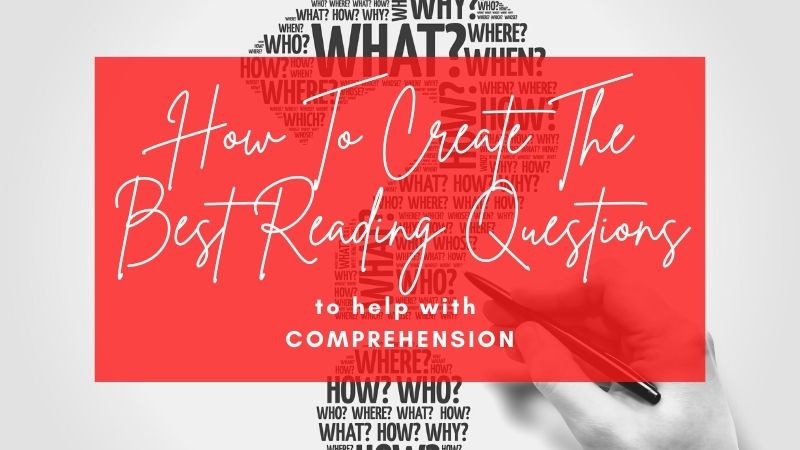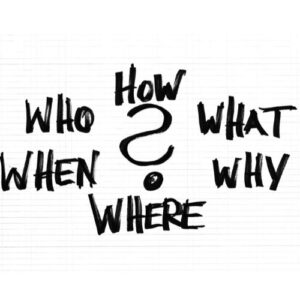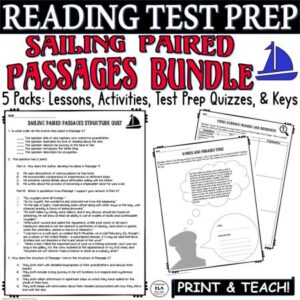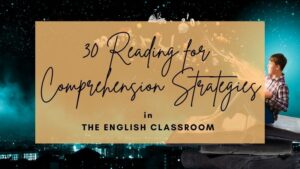As English teachers in middle school and high school, we’re not often teaching students primary reading skills like phonemic awareness or phonics. More often than not, students arrive in our classes having learned to read already (or should have). While reading skills might be still developing for some and fully developed for others, there are ways to expand and advance the reading abilities of all students through reading questions for comprehension!
Most notably this can be done by including reading questions for comprehension that contain the ever-important task of asking questions, before, during, and after reading. By teaching the questioning process in various ways, you can tap into students’ curiosity, engage readers, develop critical and creative thinking, and increase students’ knowledge and understanding through all sorts of texts. Basically, questions can open up all sorts of possibilities for all of the students in your English classes!
Keep reading for help with questions and activity ideas for teaching reading comprehension!
Need help with Test Prep? Check out this FREE Pack of 3 Test Prep Activities to help students achieve success on standardized tests!
What Makes A Good Reading Question?
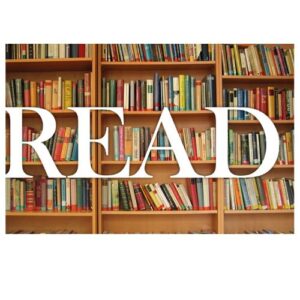
Here’s a mini-checklist for ensuring you use quality reading questions for comprehension:
- Relates to the passage – Focus on a big idea to gain a broad understanding or zoom in to the text to practice close reading.
- Gets the reader thinking – Ask more open-ended questions rather than just having students indicate specific details from a text. Instead of asking who is character X, students could examine what are the positive and negative traits of character X.
- Activates prior knowledge – Those things you taught in the lead-up to the text should make a reappearance. If you’re teaching about Edgar Allan Poe and elements of the gothic, then incorporate those ideas into questions once students are immersed in reading!
- Allows the reader to connect to the topic – Including questions for students to make text-to-self, text-to-text, and text-to-world connections will provide opportunities for creative and critical thinking. This process gets students thinking about how they see themselves in the book and how the book fits with the world around them.
- Offers higher level thinking opportunities – Giving students a chance to think about and beyond the text is ideal. Much like making connections to the text, higher-level thinking questions push students to think creatively and critically by moving beyond the basics. An easy way to incorporate higher-level thinking is to use the question stem “What would happen if…” to formulate a variety of questions at different points in reading.
Before Reading Questions
As the title implies, these are questions students will ask before reading the text. Students may already have some background knowledge (on their own or through a specific lesson), know the title or author, have read other texts in a similar genre, etc.
It is, therefore, important that before reading questions for comprehension take into account that these are starter questions.
Here are some sample before reading questions for comprehension you might use for any text:
- What do you know about the topic of the text?
- What can you predict about the text based on the title?
- Do you think this text is fiction or nonfiction? Why?
- What do you expect from this text knowing its _____ (genre or form)?
Try these before reading questions out with this free resource using FDR’s “Day of Infamy” speech. The bonus is the resource also includes activities with during and after reading questions you can use too!
During Reading Questions
These questions are focused on different parts of the text while students are engaged with the material. Questions in this section can be text-specific or move beyond the text. These questions can be repeated at different times during the text since more input/information from the text might shift/change the answer from a student.
For example, a student reading Edgar Allan Poe’s famous poem “The Raven” could examine and identify the tone of different stanzas as they read. In each instance, the responses would be different in terms of examining and citing evidence. Plus, students build on their own previous knowledge to incorporate new learning as they continue reading. Check out this lesson bundle for Poe’s “The Raven” with everything you need to complete this activity!
During reading questions can also narrow in more specifically on the text. In these reading quizzes about Poe’s “The Tell-Tale Heart,” there are questions about specific words and phrases that require close reading. You might ask a specific question like “What is the effect of the description within the following excerpt?” and include a short excerpt from the text as a part of your strategy to include more Reading Questions for Comprehension!
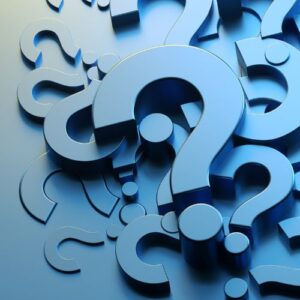
After Reading Questions
These Reading Questions for Comprehension are obviously asked after a student has read a text and would ideally focus on the full text, including big ideas or themes.
With a non-fiction text like this original one called Roller Skating that comes with reading quizzes, students consider the whole text when answering questions about the central idea and the author’s purpose.
Another option is to use paired texts. Students might read a short story and a nonfiction piece like in this pairing about sailing. While before and during reading questions for comprehension can still be used, the goal with after reading questions for these activities is to dig into comparative elements such as point of view and complex characters.
Ways Students Can Respond To Reading Questions for Comprehension
Once you have reading questions for comprehension established for your chosen text, how students respond to those questions is equally important. There are lots of tried-and-true methods you might use, including the following:
- Think-Pair-Share – First, students get a chance to think independently (provide a sticky note to jot down ideas and build in accountability). Next, they pair up with a partner to expand their points of view. Finally, make time to share with a group or the whole class. This final component acts as both a way for students to gain more information or to “check” their own information in comparison to others.
- In writing – Including written responses can be informal or formal, or long or short. Consider the goal. Is it just to answer or is it to provide writing practice with specific guidelines or techniques? If it’s just to answer, then replying on a sticky note, doing a gallery walk, or using an exit ticket would work. Something more formal with developed and sustained writing will need time, space, and specific teaching to encourage suitable responses.
- Through Discussion – Developing oral communication through discussion questions can be accomplished in small or larger groups. It doesn’t always need to be a full class discussion in order to elicit results. Using a speed dating response technique where students cycle through discussions with different partners in class can be engaging and add some physical movement, too.
- Reflection – Reflective writing can be difficult at first but offering sentence starters and repeat opportunities will increase students’ comfort. Sentence starters such as “I connected with character ______ because …” or “From this text/character/____, I have learned that …” help students to focus their thoughts.
- Applying the ideas beyond the reading – How can students apply their knowledge in different ways? This might be through additional or different/choice assignments or transferring knowledge from one text to another like in paired readings.
Want 30 Reading Comprehension Strategies you can use in your classroom today to help your students tackle Reading Questions for Comprehension? Click HERE to read about this vital topic for Reading and English teachers!
A Final Word on Reading Questions for Comprehension
With a mix of Reading Questions for Comprehension, students draw on their previous knowledge as new learning is added. This helps to engage students in the process of reading, which also works for accountability. At the same time, responding in different ways or formats hones students’ abilities and keeps things fresh in class.
At a most basic level, reading questions for comprehension ensure students understand a text. But these reading questions do more than that!
The practice of questioning a text using quality questions is invaluable. This process creates critical thinkers who apply their previous knowledge and look to the details as well as the bigger picture. These skills are beneficial as students progress through high school (and beyond) and encounter more difficult texts.
Need more ideas for teaching reading? Check out my store Kristin Menke-Integrated ELA Test Prep!

